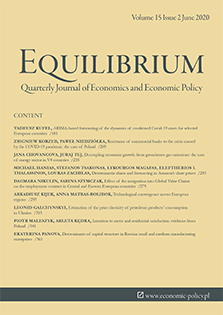Intention to move and residential satisfaction: evidence from Poland
Intention to move and residential satisfaction: evidence from Poland
Author(s): Piotr Maleszyk, Arleta KędraSubject(s): Labor relations, Rural and urban sociology, Economic development, Migration Studies, Human Resources in Economy
Published by: Instytut Badań Gospodarczych
Keywords: migration intentions; residential mobility; residential satisfaction; housing satisfaction; urban development; Poland;
Summary/Abstract: Research background: Residential mobility affects the spatial structure of cities and urban development. Longer-distance migration has many additional implications: it affects the demographic situation of a sending area as well as its growth prospects. The literature on interregional and especially international migration regards residential satisfaction as being of at least secondary importance. More attention to this concept is given in research on intra-urban migration and suburbanisation. In a seminal paper of Speare (1974), residential satisfaction was found to be the best predictor of the willingness to move. However, determinants of mobility are country-specific. Purpose of the article: Answering the following research questions: 1) What is the scale and selectivity of the intention to move among city residents? 2) Does residential satisfaction explain variation in migration intentions? Methods: The data are derived from the PAPI survey on life quality in Lublin, Poland (sample: 1101 residents). We build ordered logit models explaining residents’ declarations regarding different types of migration (intra-urban migration, suburbanisation, interregional and international migration) with various proxies of residential satisfaction, as well as financial situation and demographic attributes. Findings & Value added: The propensity to migrate was declared by approx. 15–30% of respondents, depending on the type of migration, which indicates relatively low mobility as against EU countries. We confirm that the intention to move is highly selective. The estimated ordered logit models explaining the intention to move prove that satisfaction with housing and neighbourhood characteristics along with life-stage characteristics are relevant predictors of intention to move both within and outside the region. We disregard the opinion that unemployment and adverse financial situation are key drivers of mobility in contemporary Poland. In a more international context, we provide evidence on how long- and short-distance migration are different in nature and discuss some policy implications regarding countering depopulation in peripheral areas.
Journal: Equilibrium. Quarterly Journal of Economics and Economic Policy
- Issue Year: 15/2020
- Issue No: 2
- Page Range: 341-360
- Page Count: 20
- Language: English

